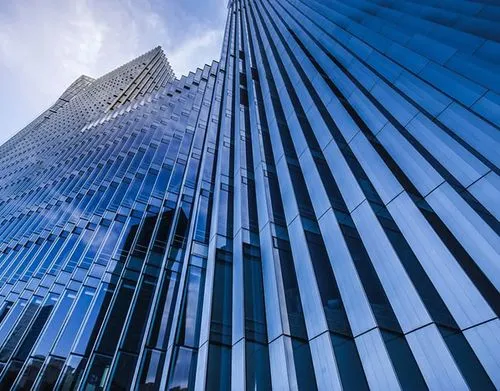
How expensive is it to make a pergola
Dreaming of adding a pergola to your backyard but unsure about costs? Pergola prices vary widely based on materials, size, and whether you DIY or
Curtain walls are a popular choice in modern architecture, offering sleek aesthetics and improved energy efficiency. However, one common question that arises is: Is a curtain wall safe? In this article, we will explore the safety aspects of curtain wall systems, their structural integrity, fire resistance, and how they withstand extreme weather conditions.

A curtain wall is a lightweight, non-load-bearing façade system that is attached to the exterior of a building. Typically made of glass, aluminum, and other materials, it serves as a protective skin, shielding the structure from wind, rain, and other environmental elements.
Curtain walls are designed to withstand high wind loads and other external pressures. Engineers conduct rigorous testing, such as:
High-rise buildings, in particular, require strong aluminum frames and reinforced glass panels to maintain safety even under extreme weather conditions.
Fire safety is a critical concern for any building. Curtain walls incorporate fire-resistant materials to slow the spread of flames and smoke. Many systems use:
Compliance with international fire safety standards, such as NFPA 285 (for fire propagation) and EN 1364-3 (for fire resistance of curtain walling), ensures additional protection.
In earthquake-prone areas, curtain walls are designed with flexibility to absorb seismic shocks. The use of expansion joints and flexible connectors allows the system to move slightly without breaking, reducing the risk of falling debris.
A well-engineered curtain wall system prevents leaks, moisture intrusion, and air infiltration, ensuring long-term durability and maintaining indoor air quality. High-performance sealants and drainage systems help in preventing water damage.
For buildings that require additional security, laminated or tempered glass can be used in curtain walls to prevent break-ins and accidental breakage. These materials provide extra strength and durability, making them difficult to shatter.
Yes, curtain walls are safe for both residential and commercial buildings when properly designed and installed by professionals. The key factors that ensure safety include:
✔ High-quality materials – Using certified, durable glass and aluminum.
✔ Professional installation – Proper mounting and sealing to prevent structural issues.
✔ Regular maintenance – Periodic inspections to check for leaks, cracks, and other damages.
Curtain walls are not only aesthetically pleasing but also highly safe and reliable when designed according to industry standards. Their structural integrity, fire resistance, and ability to withstand extreme weather make them a trusted choice for modern architecture.
If you’re considering curtain walls for your next project, working with an experienced manufacturer ensures you get a high-quality, secure, and long-lasting system.
Looking for premium curtain wall solutions? Contact us today to learn more!

Dreaming of adding a pergola to your backyard but unsure about costs? Pergola prices vary widely based on materials, size, and whether you DIY or

Thinking about investing in an aluminum pergola1 but wondering if it’s worth the cost? The lifespan of your pergola directly impacts its value and your

Thinking about adding a pergola to your outdoor space but unsure about material choices? Aluminum pergolas have gained popularity for their durability and low maintenance,
Are you considering tilt-up construction for your next project but worried about potential drawbacks? While this method offers many benefits, it also comes with some
When you hear “curtain wall” and “curtain system,” do they sound like the same thing? It’s easy to get them mixed up, especially in the

Ever wondered about those sleek, glass-covered buildings dominating city skylines? Chances are, they use curtain walls. But why are architects and builders choosing this system,
Before contacting suppliers, it’s essential to determine the exact specifications of the windows and doors you need. This includes:
The more detailed you are, the easier it will be for suppliers to provide accurate quotes and product options.
China has a vast manufacturing industry, so it’s crucial to find reliable suppliers who can deliver quality products on time. Here’s how to start your search:
Consider factors like the supplier’s reputation, certifications, and product quality. It’s also wise to work with suppliers who are accustomed to exporting to your region, as they’ll be familiar with international standards and shipping requirements.
Before placing a large order, request samples. Samples give you a chance to assess the quality firsthand and confirm that it meets your standards. Be prepared to cover the costs of samples and shipping, but consider it an investment in ensuring you’re working with a trustworthy supplier.
When reviewing samples, pay attention to:
Once you’ve selected a supplier, it’s time to negotiate terms. Most suppliers expect some level of bargaining, especially for larger orders. Important aspects to discuss include:
Quality assurance is crucial, especially when importing from abroad. Consider these inspection steps:
Importing windows and doors involves managing shipping logistics and navigating customs procedures. Here are some key factors:
After confirming quality, shipping terms, and pricing, you can place your order. Ensure that:
When the products arrive, inspect them thoroughly. Ensure there’s no damage from transit, and verify that everything matches your specifications. If there are any issues, address them with the supplier immediately.